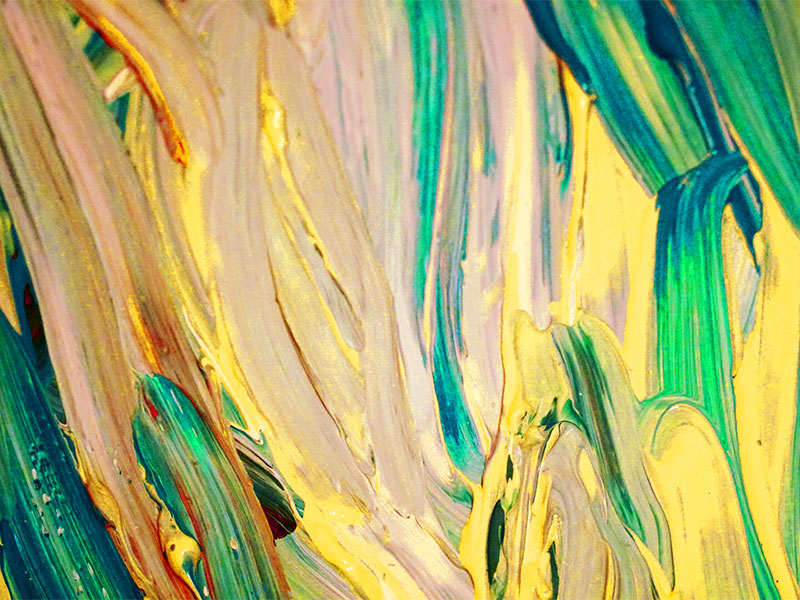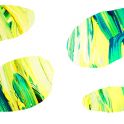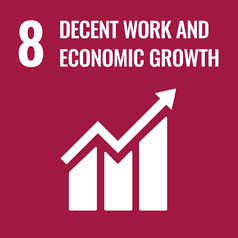Long ago, a mysterious phenomenon lurked beneath the shadowy waters off Palm Cove in Northern Queensland. Agonizing pain, profuse sweating and sickness alerted bathers to the fact they had been claimed as a victim of the deadly, invisible force.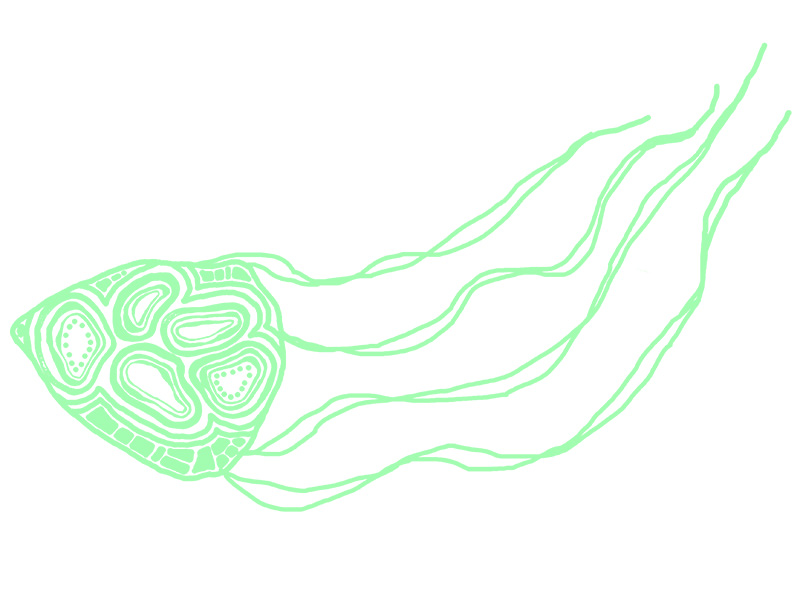
For years, the Indigenous Yirrganydji people were wary of these waters, suspecting a bite from an unknown and unseen predator was to blame for the unexplained casualties.
And they were right.
In the 1960s, the invisible culprit was finally exposed. A tiny, see-through marine animal about the size of a peanut dragging four toxic tentacles in its wake – now known to be the smallest and most venomous jellyfish in the world.
These Irukandjis span both land and sea, meaning no one is safe from their sting.
With its name honouring the traditional landowners who have lived alongside it for generations, the Irukandji is a species of the lethal box jellyfish native to Northern Australia.
However, despite its affinity for the temperate tropics, deadly Irukandjis are now surfacing in Tokyo… but perhaps not in the way you’d expect.
These Irukandjis span both land and sea, meaning no one is safe from their sting.
Instead of long, organic tentacles, their weapon of choice is a fiberglass board to tame the ocean into defeating their enemies; and their armour has evolved from translucent to the striking green and gold of their home nation.
In an historic moment, surfing is about to debut as an Olympic event in Japan and The Irukandjis is the name gifted to Australia’s first ever surf team.
Headed into battle with pride, The Irukandjis have labelled themselves ‘deadly in the water’ – an invisible force set to strike their opponents with a sting. An homage to their country, its history and traditional owners.
Connecting far west New South Wales with eastern Australia, Jasmine Craciun’s history ties her to both fresh and salt water. Her ancestors – the Barkindji (People of the Darling River) – lived alongside the mighty Barka (Darling River) in Wilcannia, complementing her upbringing on the shores of coastal Newcastle in New South Wales.
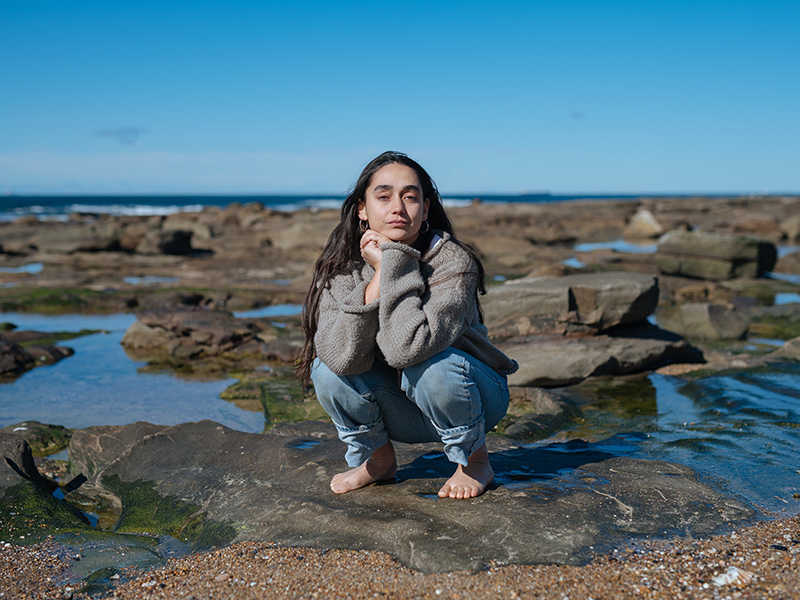
"This project... connects the rivers of inland Australia with the Pacific Ocean from the east coast and all the way up to far north Queensland."
Pictured above: Jasmine Miikika Craciun
Jasmine is the young and talented artist behind The Irukandjis’ visual identity. With water entwining her past and present, she was perfectly poised to harness her heritage as the inspiration for the art created to represent the team.
“Water is in my blood,” she explains.
“This project is so special to me because it connects the rivers of inland Australia with the Pacific Ocean from the east coast and all the way up to far north Queensland. I wanted to express that in the artwork I created.”
Discover how Visual Communication Design graduate Jasmine Miikika Craciun's illustrations made it from the rippling shores of Newcastle to the Olympic waves of Japan.
It was a quiet afternoon in the office of Indigenous social change agency Cox Inall Ridgeway in Sydney that opened the door to The Irukandjis opportunity. A moment Jasmine will never forget.
“I was working on a mural at their new premises, which they share with national advertising agency BWM Dentsu, when I was approached with the Olympics opportunity," she says.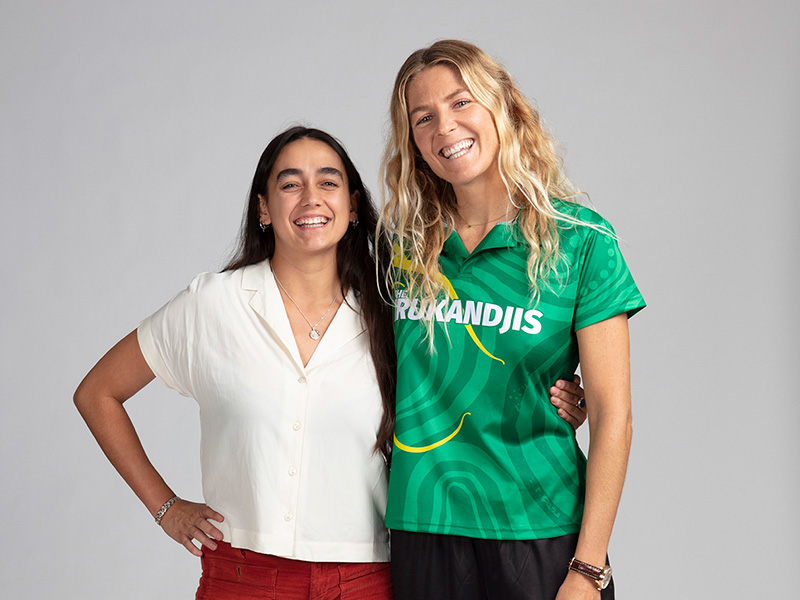
“I had to pick my jaw up from the floor.
“For me, having grown up next to the ocean with a dad who’s a mad surfer, it was an unbelievable moment. Then later on, being able to have him with me at the launch event and meeting the Olympic team was so cool. He was beyond stoked.”
Pictured right: Jasmine and world-champion surfer Stephanie Gilmore in The Irukandjis uniform (c) Surfing Australia
Jasmine and her family’s deep connection to culture is a passion shared by The Irukandjis team, who worked with traditional custodians of the land to receive the name.
“It was really important to me that the name Irukandjis had been gifted to the team by the Yirrganydji people. It shows the pride Surfing Australia and our Olympians – who come from all different backgrounds – have in showcasing our culture to the rest of the world.”
“It was really important to me that the name Irukandjis had been gifted to the team by the Yirrganydji people."
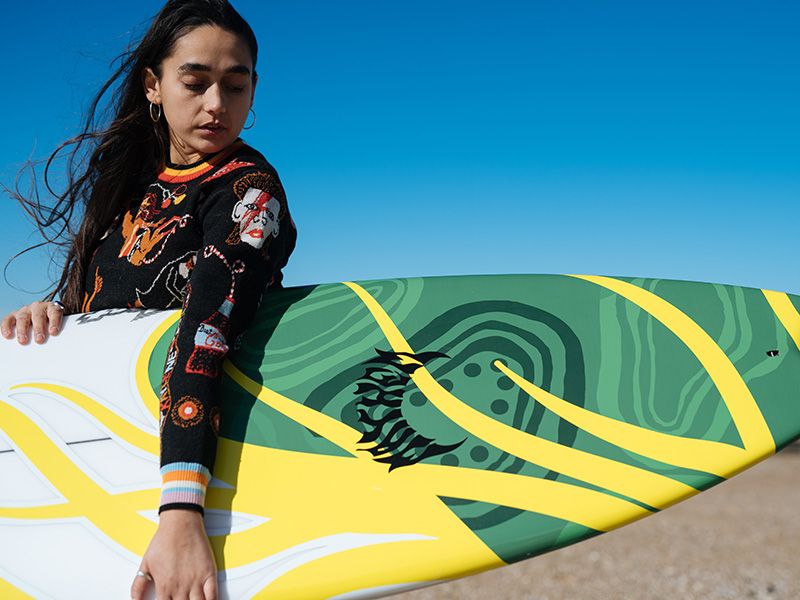
Jasmine Cracuin and The Irukandjis' surf board featuring her design

An early ink sketch featuring jellyfish and ripple design

Jasmine holding the early ink sketch of the chosen ripple design

Jasmine holding her Irukandjis board signed by the Olympic team
Graduating from Visual Communication Design at the University of Newcastle in 2018, Jasmine has worked hard to hone her skills in both traditional and digital artforms to give her art new context.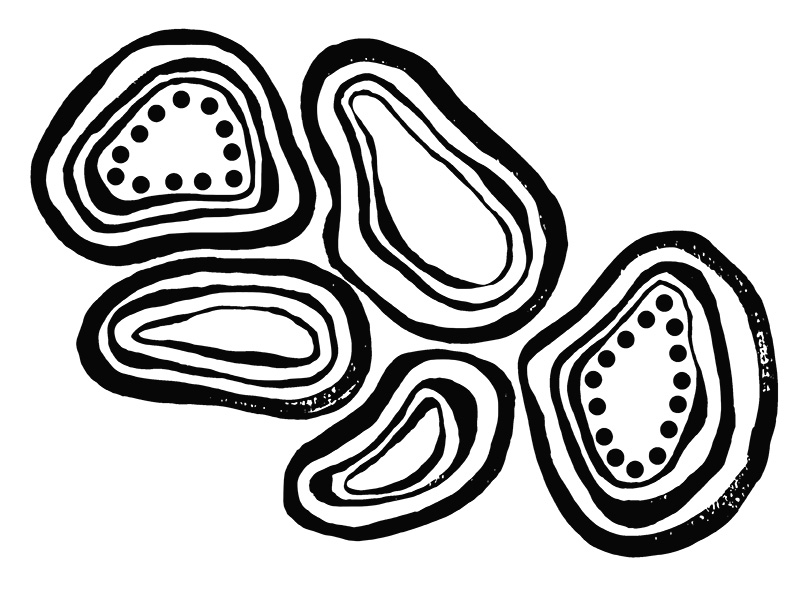
She credits the flexibility of her degree as well as the opportunities for work experience and support she has received from the local artisan community for her success.
“At uni I was able to incorporate courses in animation, typography and natural history illustration into my studies. It gave me such a great launch point to explore fusing traditional methods with things like animation and graphic design."
Despite the boundless mediums with which Jasmine now works, she usually begins in the same way – putting pen to paper.
“The way that Aboriginal people use art to hold their history and story is something I’ve always felt passionate about."
“I thought a lot about my personal story and started with a hand drawn ink sketch referencing the fluid movement of the ocean and the ripples within the water.
“I then digitised the piece in order to keep the wobbly hand-made lines and ink patches to create a more organic and free-flowing design.”
Working with BWM Dentsu, Jasmine's experience as a graphic designer meant she was granted unique insight into the commercial side of her craft.
“It was amazing because they really encouraged me to be part of the whole process. I was able to work as part of the graphic design team alongside their designers and executives to develop my concepts and ensure I had input from start to finish, and the design evolved in a way that still told my story," she explains.
“The way that Aboriginal people use art to hold their history and story is something I’ve always felt passionate about.
“Storytelling is how we learn about our heritage. My grandmother always speaks fondly of the mighty Barka and her childhood – beautiful anecdotes like the fact they didn’t have many toys growing up so they would collect the colourful caterpillars from beside the river and trade them.
“Unfortunately, we’re now seeing such degradation in the ecosystem, a lot of that wildlife doesn’t exist anymore, but she keeps it alive in her stories. That’s what I hope to do too.”
*All artwork courtesy of Jasmine Cracuin (@kik_design_)
